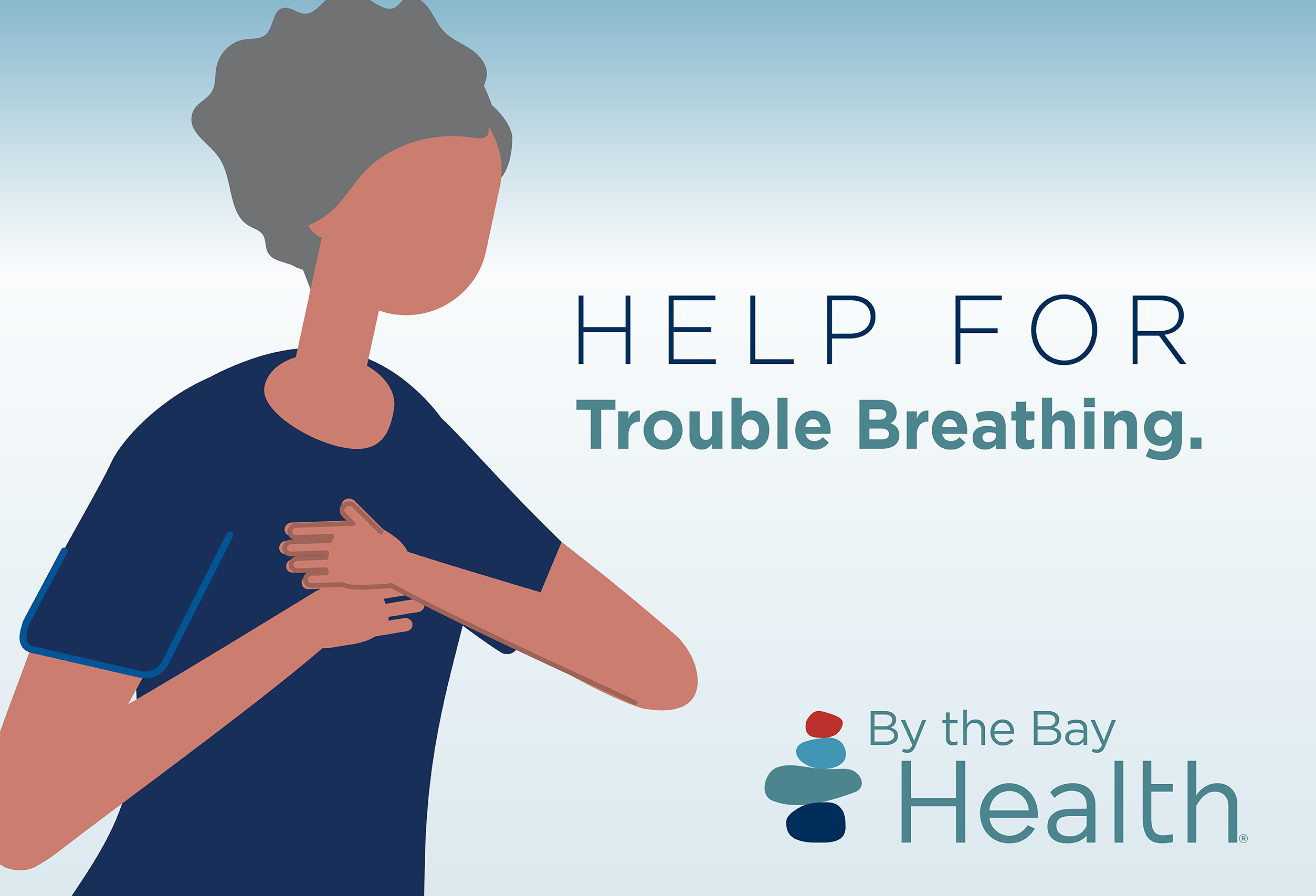
UNDERSTANDING COMMON SYMPTOMS
Trouble breathing is the feeling or sound of not getting enough air. It includes fast, slow, or unusual breathing. People describe feeling like it’s hard to “catch” their breath or having tightness or weight in their chest. They can also feel scared or restless. Trouble breathing can be caused by disease (like heart or lung diseases), muscle weakness, anxiety, or normal changes at the end of life.
 During the final days of life…
During the final days of life…
• Breathing can be very fast and then slow, or there can be no breathing at all for up to a minute. It’s also normal to see pale or bluish skin or lips, because there’s less oxygen moving through the body.
• It’s normal for breathing to be uneven and noisy. The breathing center of the brain is shutting down, and saliva can collect in the mouth and throat.
• Oxygen and medicine may help, but don’t always work. Talk with your nurse to learn about these options.
While it may be upsetting for those in the room, people at the end of life are almost always comfortable and unaware of the noises they make.
Caring for Trouble Breathing Without Medicine
• Change position so the head is raised.
• Open a window or use a fan to blow cool air on the face.
• Try “pursed lip” breathing, or ask your nurse about this technique.
• If you hear gurgling, turn your loved one on their side.
• Holding hands, gentle massage, and/or a cool cloth on the forehead or back of neck may be soothing. Dim lights, talking softly, quiet music, and petting an animal can also help.
 Always call your care team if you’re concerned about trouble breathing.
Always call your care team if you’re concerned about trouble breathing.
The final days can be difficult for caregivers. Be gentle with yourself and ask family, friends and/or your hospice team for help.

Morphine is one of the best medicines for trouble breathing, and lorazepam (Ativan) can help with relaxation. Talk with your care team to learn more about how we safely use these medicines and common side effects.
Refer to the Symptom Management section in your Hospice Care Guide or the Approaching the End of Life brochure for more information about what to expect in the final days.

